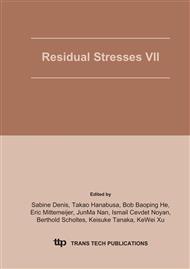[1]
R. E. Goosey, Metals and Materials, 1989, vol.5, pp.451-454
Google Scholar
[2]
E. M. Trent, Metal Cutting, Third edition, 1991, Butterworth-Heinemann Ltd., Oxford, pp.237-241.
Google Scholar
[3]
H. E. Chandler, Metals Handbook, 9th edition, Vol.6, Machining, ASM International, Metals Park, OH 44073, 1989, p.844.
Google Scholar
[4]
Parrish ,G. (1977). Heat Treat.Met.4, 107-116.
Google Scholar
[5]
Vomacka, P.& Walburger,H.(2000). Mater. Sci. Forum, 347-349, 592-597. (Proceeding of the 5th European Conference on Residual Stresses).
DOI: 10.4028/www.scientific.net/msf.347-349.592
Google Scholar
[6]
Manuchehr Vosough, 2002-02-20, A Literature Study of High Pressure Cooling "Jet Break" And Turning in Titanium, Department of Applied Physics and Mechanical Engineering Division of Manufacturing Systems Engineering The Cirius Laboratory, p.17.
Google Scholar
[7]
A. Turnbull, ER de los Rios, R.B. Tait, C. Laurant, and J.S. Boabid: Fatigue Fract. Eng.Mater. Structures, 1998, vol. 21, pp.1513-24.
DOI: 10.1046/j.1460-2695.1998.00125.x
Google Scholar


